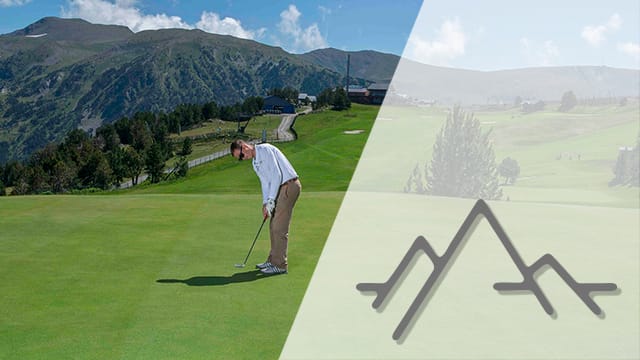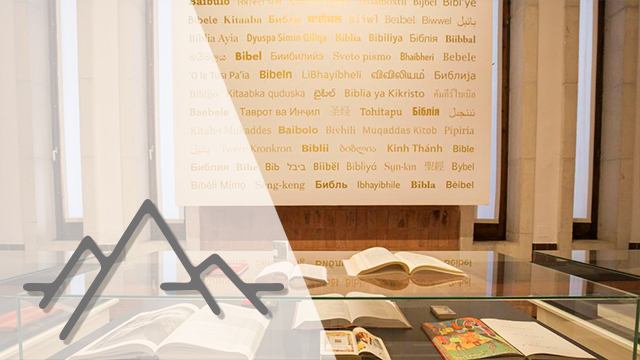By naming someone the place name Andorra one of these three things will come quickly to mind or a combination of them: skiing, tax haven and cheap shopping.
Although this simple three-word description does not stray too far from reality, this small Principality embedded in the middle of the Pyrenees between Spain and France has many details that go unnoticed by most ordinary people. Andorra has a long history and a journey, and its particularities make it a unique country in the world.
In this article we are going to highlight 10 things unknown to people about this Principality, which has one of the highest per capita incomes in the world. That is, and as the title says, the 10 things you probably didn't know about Andorra.
1. Andorra is not a tax haven (anymore)
The country has been taking measures transparency, openness and international approval more than a decade. In 2010, it signed an agreement for the exchange of tax information with Spain, thus leaving the list of tax havens in the country. In 2011 Andorra closed an agreement by which left the OECD blacklist of tax havens and since 2012 the gray list of the same. Finally in 2018, after reforms in the Corporate Tax law, the ministers of economy and finance of the European Union (Ecofin) agreed that Andorra definitively leave the gray list of tax havens of the European Union, being thus out of all the lists.
In this article we explain why Andorra is no longer a tax haven in greater detail and with all its history of transformation and economic opening.
2. Andorra has not one head of state, but two
Andorra is a co-parliamentarian. The origin of the figure of the co-princes dates back to the 11th century, when a principle of feudal distribution between the Bishop of Urgel and the count of Caboet, later integrated into the County of Foix, which became the possession of the Kingdom of Navarre. After integrating this kingdom into the Kingdom of France with Enrique IV, Luis XIII decided in 1620 to unite the title of king of Navarre and his rights transmitted from the co-principal of Andorra, in the crown of France.
Since then Andorra has been a co-principal between the heads of state of France and the Bishop of Urgel. The Constitution of 1993 adopted this traditional form of representation.
3. The highest golf course in Europe is here
Managed by the operating company of the largest ski resort in Andorra, Grandvalira Golf Soldeu it has nine holes and is the highest altitude golf course in Europe. From spring to October, the snow melts and the ski slopes are used for golf, with a green with spectacular views located at 2,250 meters.

It is easily accessible from the Soldeu cable car, it is 2,590 m long and 16 hectares long and, due to its characteristics, it is suitable for both experts and beginners. Further, the field has been harmoniously integrated with its natural environment, taking advantage of the topography and natural elements.
4. More than 90% of the territory is forested
Of the 468 km2 of surface that the country has, only 8% is urbanized land and the remaining 92% is forest territory, which makes the country a paradise for nature lovers. Specifically 38% are forests, 26% high mountain meadows, 20% canchales or orographic pedria, 5% urban area and infrastructure, & lt; 1% water and 10% others.
There are not many places in the world that can boast of having such a high percentage of nature. It also includes three natural parks (that of Sorteny, that of Comapedrosa, and that of Vall del Madriu), some seventy lakes and 65 peaks over 2,500 meters in altitude. To enjoy a total immersion in this exuberant nature, there are thirty shelters scattered throughout the Andorran territory, the vast majority free.
5. The largest collection of Bibles open to the public
At 86, the Andorran Pere Roquet, managed to reunite a collection of Bibles that surpasses the 1,600 volumes. The Bibles, some bilingual and trilingual, are written in 1,935 different languages and serve the purpose of recognizing linguistic diversity in the world. The owner transferred these specimens to the Archbishop of Andorra, and thanks to the agreement they signed, it was adapted the fireplace room the sanctuary- basilica of Meritxell to install the permanent exhibition, cataloged, baptized as Bibles of the world and open to the public as a museum.

The adventure began in 1995 during a visit to Kenya, where he met missionary Franco Moretti. He asked about his expectations for the future when he retired, to which Roquet replied: "I want to travel, read, take care of the grandchildren and make a collection of something that has a cultural interest." Father Moretti then gave him a New Testament written in Turkana.
The collection includes some Unusual Bibles, like the one in North Korea, one of the most difficult to get, according to Roquet, since Christianity is persecuted there. Or one written in dzongkha, the official language of Bhutan. Or the Bible written in Yagan, a language that has only one speaker in the world, Cristina Calderón, 91 years old.
6. All history without wars
Andorra has never been at war, nor does it even have an army, and, last but not least, in terms of crime it is one of the safest countries in the world. The Principality has always been an island of peace, even when half the continent was involved in long conflicts.
Already in the hippy years of 1960, in the midst of the Cold War's military and atomic escalation, in the United States he praised the long tradition of peace, neutrality and demilitarization of the Pyrenees Principality. The reason was that Andorra spent 4 dollars and 90 cents a year on weapons and, unlike other major countries, it was a safe country.
Specifically, Andorra has been neutral for more than seven centuries without wars. Thanks to its institutions described in the 18th century Digest Manual, with powers and counter-powers that create a balance between the territories, guarantors of sovereignty and peace. This is especially remarkable if we take into account all the armed conflicts that neighboring countries France and Spain and all of Europe in general have gone through at the same time.
7. The smallest parliament in Europe
With the original name "Consell de la Terra", the "Consell General d’Andorra" was created in 1419 and reformed in 1866, and is the country's legislative assembly. You can have a minimum of 28 members and a maximum of 42, which are chosen in a mixed way: half by parish constituency and the other half by national constituency (now there are 28).
La Casa de la Vall was the parliamentary seat from 1702 to 2011, when it moved to its current location. At present, the Casa de la Vall can be visited as a historical space. However, the traditional sessions (the constituent and the session of Santo Tomás) are still held at the Casa de la Vall. It is now a monument declared of cultural interest by the Andorra Cultural Heritage.
8. 10% of the country's extension is a World Heritage Site
One of the three natural parks in Andorra, the «Vall del Madriu-Pedrafita-Claror»Was declared by Unesco in 2004 as world heritage of humanity in the category of cultural landscape. Thus, it began to be part of a select club, since less than a hundred places on the planet have this prestigious recognition. The park covers an area of 4,247 ha and extends through the parishes of Encamp, Andorra la Vella, Sant Julià de Lòria and Escaldes-Engordany.

"La madre rio" is the Latin nickname for Madriu, the valley that owes its "U" shape to its glacial origin, a characteristic of valleys emerging from ice. Its main source of wealth is river water which, in turn, feeds on a wide variety of lakes within the glacial circus of the choker. In addition, the GR-7, GR-11 and GRP (great route of the country) paths run through it, with which it can be visited on foot.
9. It is the only country with Catalan as the official language
Catalan is the official, own and national language of Andorra. More than 65% of the population with Andorran nationality has this language as their mother tongue. Catalan is the only official language of the country according to the Andorran Constitution of 1993, although due to the Principality's traditional history of emigration and its exposure to tourism, Spanish, French, Portuguese and even Russian are used very frequently, although to a lesser extent.
This is why despite being Catalan the only official language, Andorra is a member of the Organization of Ibero-American States and the International Organization of La Francophonie. And it is that in Andorra, according to the statistical department, in 2017 of 74,794 inhabitants only 49.1% were Andorran. 25.1% were Spanish, 4.3% were French, 12.3% Portuguese and the remaining 8.6% others.
Andorra's membership in the United Nations Organization, held on July 28, 1993, allowed first time in history the use of Catalan in an assembly of that organization. Catalan is also the vehicular language in the Andorran and Spanish educational systems within andorran's varied education.
10. All homes have fiber optic coverage, even in towns
In 2013 Andorra became the first country to have the 100% of homes covered at the level of fiber optic infrastructure and installation with a universal rate of 100Mbps symmetric, allowing them the following year to disconnect ADSL permanently from the country. In 2017 they improved fiber optics to 300 Mbps and in 2018 they did it again, offering 700 Mbps or 1 Gbps for companies currently offered by Andorra Telecom, the Andorran telephone company.
In addition, after adapting the current powerful telephone networks in 2016, they permanently shut down the copper telephone networks of all life. It is remarkable and relevant that this mobile phone network reaches 98% of the country's territory, taking into account that less than 10% of Andorra is developable and the complexity of the relief and orography. Can one get lost among the mountain trails or do long trail and mountain routes and be permanently connected.
And so far everything. I hope that with these ten points you now have a clearer and more precise idea about this small Principality in the Pyrenees between France and Spain. We also remember that if they want to establish, settle and live in Andorra, in Abast Global we offer comprehensive support to do so with experts both nationally and internationally to offer professional legal, tax and accounting services and customized to your particular case. They can contact us here and tell us your case.





